SEIZING THE CHANCE FOR CHANGE


Two visionary UTS alumni discuss how we can take what we are learning from the COVID-19 pandemic and carry it forward into the future.





Two visionary UTS alumni discuss how we can take what we are learning from the COVID-19 pandemic and carry it forward into the future.


Renewal seems to be a fitting theme for my first President’s Report. Spring has taken root, and life is regenerating all around us. On a personal note, I started a new job in January, my first big career move in over 17 years. More broadly, after what feels like an eternity, life after lockdown is underway in many parts of the world and, despite setbacks, within sight in others.
Renewal means revitalization, re-invigoration, or rejuvenation of something that already exists and will remain. In this season’s gardens, freshly planted annuals complement the blooming perennials. At work, I am learning from my new colleagues, and doing novel things, while employing skills and knowledge I brought to the role. When the cloud of the pandemic has passed, I imagine we will weave some of the silver linings into our post-quarantine way of living, such as the innovations in the way we gather, communicate, and collaborate online.
T his is a time of great renewal for UTS. After years of thoughtful planning and execution, the school’s reimagined home is close to being fully realized. The renovated and expanded structure, designed to meet the needs of current and future generations of students, is not replacing the old building. The bones of our former haunt will still be there, as part of something that builds upon what came before. The soul of the place will live on in the school’s perpetual celebration of learning, its dedicated staff, and of course, its alumni. We may be saying goodbye to the overheated locker room, the vintage science labs, the shabby-chic auditorium, and other beloved badges of honour. But we look forward to the new memories we will build on the unwavering foundation of our community.
PRESIDENT
Aaron Dantowitz ’91
Aaron.Dantowitz@utschools.ca
Laura Money ’81
Jonathan Bitidis ’99
Jonathan.Bitidis@utschools.ca
Aaron Chan ’94
Aaron.Chan@utschools.ca
David Dodds ’73
David.Dodds@utschools.ca
Anne Fleming ’85 Anne.Fleming@utschools.ca
TREASURER
Sara Son Hing ’97
Sara.Son.Hing@utschools.ca
SECRETARY
Ian Speers ’98 Ian.Speers@utschools.ca
DIRECTORS
Peter Frost ’63
Peter.Frost@utschools.ca
Adarsh Gupta ’12
Adarsh.Gupta@utschools.ca
Oliver Jerschow ’92
Oliver.Jerschow@utschools.ca
Peter Neilson ’71
Peter.Neilson@utschools.ca
Bob Pampe ’63
Bob.Pampe@utschools.ca
HONORARY PRESIDENT
Rosemary Evans REvans@utschools.ca
HONORARY VICE PRESIDENT
Jennifer Pitt-Lainsbury JPittLainsbury@utschools.ca
Avanti Ramachandran ’09
Avanti.Ramachandran@utschools.ca
Morgan Ring ’07
Morgan.Ring@utschools.ca
Tim Sellers ’78
Tim.Sellers@utschools.ca
Jessica Ware ’95 Jessica.Ware@utschools.ca

We will be the school we always dreamed we could be.
The day is coming – no longer in the distant future but within the year – when UTS students will walk through the doors of our renewed school building for the first time to discover their unlimited potential in stunning new classrooms. In the Lang Innovation Lab, students will transform ingenious ideas into reality, their dreams supported by equipment such as a 3D carving machine. They will gather on the Learning Stairs in the skylit Fleck Atrium to envision changes they want to see in our school, and in our world. In the new Jackman Theatre, they will bring drama to life. The list goes on, all thanks to the entire UTS community, who came together in a powerful show of support to make this new school happen for our students.
Now, the transformation is about smoothing down the rough edges, with final touches like painting and tiling, and lockers in the halls. But we are not quite there yet.
Before students return to the classrooms, science labs and art rooms, they will need furniture and equipment that will make our renewed building a world-class institution, inside and out. From music chairs to shelves, kettlebells to speakers, sewing machines to greenscreens, there are many items students need before they return later this year. See the list on the Build Avi’s Classroom website (build.utschools.ca), named for Avi Shah, an F2 (Grade 8) student who is almost as excited about the renewed building as I am!
The renewed building is symbolic of deeper changes underway at UTS. Despite the pandemic, this has been a remarkable year, with students, staff, and the Board of Directors bravely tackling difficult conversations to drive real change. The 2020 21 Strategic Initiatives set out an ambitious, renewed direction towards anti-racism, diversity, equity, and inclusion, and creating a school culture free of sexual harassment and assault.
Th is November, when our students return to our renewed school, it will be to a better UTS, not only on the outside with the beautiful renewed building, but on the inside, where every day our students and staff live the values that lie at the heart of our school.
Imagine what our athletes, musicians, actors and performers will accomplish….
UT S is on track to return to our renewed home in late November 2021. This date has fortunately not waivered despite the pandemic, and the significant challenges of renewing a 110-year-old structure, thanks to the steadfast efforts of Eastern Construction, architects Diamond Schmitt, and project managers JLL.
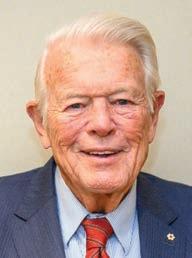
We h ave often opined the UTS experience was remarkable – despite the building. Now we are able to imagine how our building will propel students to soar, with unparalleled learning, athletics, and performance spaces.
Rosemary Evans Principal, UTS
The new Ridley Centre, a fitness studio designed in partnership with Adrian Lightowler of the University of Toronto Faculty of Kinesiology and Physical Education, will allow students to develop skills to exercise for life, as well as sport-specific fitness. Generous open areas allow for group training and socializing. The Ridley Centre is complemented by a double gymnasium for basketball, volleyball, badminton, and other sports.
The Withrow Auditorium and Jackman Theatre were designed by Diamond Schmitt, renowned for their theatre projects, in partnership with theatre specialists, Novita.
The Italian word means “creativity, newness and innovation.” With a stage that can accommodate a full symphony orchestra, and seating for 700 with a beautiful balcony, the space also has professional sound and lighting and two large back-of-house rooms. The stunning Jackman Theatre will host drama classes, performances, and community events. I can feel the excitement of SHOW performers on opening night!
The roots of UTS are as a model school that inspired exceptional educators to support our unique student population to excel. With our reopening, the school’s intentional design will propel students to reach new heights.
Jim Fleck C.C. ’49, P ’72 Board Chair, UTS
As I look back over the past year at UTS, from the time when we were all trying to grasp the ramifications of this pandemic to today, there are countless examples of generosity by UTS community members stepping up to care for each other and for the future of our school. COVID-19 has sharpened our resolve to focus on what truly matters in our lives. O ne of the most dramatic examples was the response by alumni, parents, and staff to the UTS Emergency COVID-19 Bursary appeal last spring. When we made the appeal, we had no idea how many UTS families would have their employment and health negatively affected by COVID-19 and how much funding would be required to ensure that our students could continue their UTS education. Within two weeks, $94,000 was donated for emergency financial aid and incredibly, this turned out to be the exact amount of funding that UTS families needed. Every dollar mattered and because of the generosity of our donors, we were able to keep 100 percent of our students at UTS. Thank you!
While this year highlighted the need to care for our physical and mental health, also rising to the forefront of our collective focus were issues of anti-racism, equity, diversity, and inclusion, which together form one of our strategic pillars at UTS. Thanks to virtual platforms that have become the norm as our gathering place, UTS alumni, parents, staff, and students have come together to deepen our understanding and ultimately, support one another. UTS now officially has a Community of Support and with no geographical barriers for virtual gatherings, alumni from all over the world are able to take part, with the benefits resonating at our school and throughout our entire community. A visit to the UTS website will provide many specific stories as to how this generosity has played out. Indeed, the UTS community is healthier, more aware, and stronger thanks to the focus and resolve of everyone to foster greater equity and inclusion.
The pandemic led us to focus on basic needs for our students, and as such, the UTS building project continues to be a priority for the school. We extend the utmost gratitude to all our donors who helped rebuild our school; now we also need to outfit it. Thank you to everyone who is answering the urgent call to donate funds now so that we may have everything from desks and chairs in our classrooms to cutting-edge equipment in place for our return to 371 Bloor in November. Thank you for putting the needs of our students first!
This year has served as a lesson for all of us to take pause and focus on what truly matters. I hope that you are taking the time to look after yourselves and your loved ones. And, I thank you for your inspirational generosity which we see each and every day in the positive messages that you share, your many good deeds, and your resolve to ensure that UTS continues to flourish now and for the future.
Martha Drake Executive Director, Advancement
Two UTS teachers won impressive awards this year. Charlie Pullen won Secondary Art Educator of the Year from the Ontario Art Education Association, while Shawn Brooks took the 2020 CAP Award for Excellence in Teaching Physics. Mr. Pullen says he loves “seeing students transform from being primarily concerned with getting the correct answer to realizing the importance of generating, sharing, and valuing many possible answers.” As for Mr. Brooks, he says, “I would like my students to feel as wonderful about learning how to do science as I do right now.” He believes he can still do a better job of listening. “I don’t think I’ve praised students enough. This year, I’d like to highlight and appreciate the excellent work they do.” No wonder students love these teachers!

Addressing anti-Asian racism has been the focus of UTS students, staff, and alumni following the tragedy in Atlanta, Georgia in March. This violence highlighted the increasing prevalence of anti-Asian racism during the pandemic, compelling the school to collectively reevaluate our preconceptions and biases towards the experiences of Asian communities in Canada and globally. S6 (Grade 12) students Lauren Chang and Joanna Han led two events in April to generate meaningful conversation and change. A student assembly featured Dr . Cresencia Fong , Head of Teacher Learning, Technology, and Research, and English Teacher Elsa Poon, while a panel hosted alumni Andrew Chang ’17, Edward Tian ’18 , and Selina Qing ’18 . This ties into two 2020 21 UTS Strategic Initiatives, which aim to prevent racism and gender-based violence.
Last summer, UTS S5 (Grade 11) student Anasofia Florez, an executive on the UTS Gender Equity Committee, had an epiphany: What if there was a collaboration between all UTS groups that work towards social justice? She reached out, and last fall, the Social Justice Coalition launched at UTS, bringing together 13 student groups. From the Black Equity Committee to the Day of Pink Committee to Climate Action Now, the Coalition runs the gamut from racial justice to LGBTQ2SI+ equality to student wellness to global inequities, all sharing a deep commitment to equality and justice in our world.

“ The Coalition serves as a bridge to help us collaborate,” says Anasofia. “It’s about communication and making sure that we all know what’s going on in the school and how we can help each other.” Coming soon: the Social Justice Coalition podcast!


F1 (Grade 7) student Julia Li was one of many students who tried out potential classroom chairs and desks for our renewed building. “I like the chairs that are a bit fidgety and roll on the floor,” says Julia. “They should be soft too, with a little memory foam on the seat.” She’s also fond of the standing desks. “We’re looking at flexible furniture that lets teachers design the classroom they want to have,” says Visual Arts Teacher Charlie Pullen, who helped plan the furniture tests. Six classes and UTS staff tested furniture from two vendors. Most popular was the ‘fidgety’ chair. “Some adults thought it was broken, but it’s designed for fidgety kids, and they really like it,” says Mr. Pullen. “This is the chance for students to test furniture they’ll use for the rest of their UTS careers. They put a lot of work into it.”

Call him ‘Mr. Tutoring.’ For two years, S6 (Grade 12) Anirudh Ram-Mohanram has been one of several UTS students volunteering to tutor refugee and newcomer students through the Bridge Project, a partnership between UTS and the Afghan Women’s Organization. Before COVID-19, the tutoring took place at the organization’s centres in North York, Scarborough, and Mississauga, and Anirudh taught English to a five-year-old Ethiopian girl. “At first she was very dubious, but over time we formed an emotional bond and she had a pet name for me, ‘Mr. Tutoring.’” Now the program takes place via Zoom, and Anirudh usually helps an 11-year-old Syrian refugee with reading and homework. UTS Vice Principal Garry Kollins, who supervises the program, says they’ve also recruited volunteer Arabic translators from other schools. “This program is a life lesson for our students, fostering the global citizenship our school strives for and helping them become more empathetic.”
A group of six students played an instrumental role in revising the sexual misconduct protocol at UTS, working in tandem with school lawyers at Borden Ladner Gervais and school administration, as part of a far-reaching action plan to change the “culture of consent” at UTS. “We went through line by line to edit the school protocol,” says S6 (Grade 12) student Danielle Hidi, a member of the UTS Committee on Culture Reform Related to Gender-based Violence and Harassment, where students and staff advocate for curricular, cultural, and policy reform. “The first person you tell about an incident like this – their reaction can really dictate who else you tell, and if you’re going to take action.”
After students and young alumni bravely raised concerns last summer, UTS established a Strategic Initiative to create a school culture free of sexual harassment and assault. Also in the works: a video on consent for parents, research partnerships, and restorative justice.

For more UTS news and views, check out our website at utschools.ca.

 BY KIMBERLEY FEHR
BY KIMBERLEY FEHR
The pandemic simultaneously divides and unites our world, leaving no one untouched. But this disruption from life as we know it presents a chance for change, or even an unprecedented opportunity to reinvent our world. Two visionary UTS alumni, environmentalist and award-winning author Lydia Millet ’86 , and JA Worldwide President and CEO Asheesh Advani ’90 discuss how we can seize this chance for change, taking the best of what we are learning from the COVID-19 pandemic and carrying it forward into the future. It begins with empathy.
From her window amid the saguaros of the Sonoran Desert outside Tucson, Arizona, Pulitzer Prize nominee Lydia Millet watches the daily spectacle of life on earth unfold before her – the prickly pear cactus blooming and the darting flight of the Anna’s hummingbird – sharing an empathy with nature she says many people have now just discovered because of the pandemic.
TOP: Asheeh Advani ’90 with Canadian students at a JA Worldwide Global Youth Forum. BOTTOM: During the pandemic, Lydia Millet ’86 signs her book, A Children’s Bible, on the front porch of the home she shares with her children and boyfriend.



L ockdowns and social distancing rules led to a major resurgence in outdoor activities. Nature reclaimed the deserted streets of cities as cougars roamed the streets of Santiago, Chile for the first time, and dolphins swam further up the Bosphorus than ever before. The gates closed and wildlife made remarkable gains in renowned national parks like Yosemite.
“It wasn’t just a matter of wildlife emerging more, but also of people noticing it and wanting to observe it,” she says. “The pandemic brought a lot of people oddly closer to the other life that exists in our streets and our gardens. There’s an access to nature and wild places; to landscape and the sublime that we haven’t had for a long time.”
The closer we can get to things, the better we know them, and the more we can love them, she says, joking that doesn’t mean we still can’t get really irritated by family members during the pandemic. “But in general, we love what we know, and we can’t love what we don’t see.”
L ike the red-tailed hawk circling above, she sees the big picture, and can’t look away. An author of more than a dozen novels and short story collections, she also works as the chief editor at the Center for Biological Diversity, an organization with the all-encompassing mission of “saving

life on earth,” and her work there pervades her environmental fiction.
I f her revered dystopian climate change novel, A Children’s Bible, named one of the New York Times Top 10 books of 2020 and a National Book Awards Finalist for Fiction, advocates for anything, she says it is empathy: the will to know the world better, to know each other better, and empathize with each other. With a plot impelled by “a righteous anger at the moral failings of the older generations,” the story begins with a group of families vacationing together in a country home, the children a tribe unto themselves, so contemptuous of their parents they won’t even admit to each other who their parents are. The earth is dying and in the words of teen protagonist, Evie: “We knew who was responsible, of course: it had been a done deal before we were born.”
A s the world beyond descends into climate change chaos, the parents drink and the children become the competent ones in the novel, leaving for a safer home, only to return in an ultimate show of empathy to care for their parents and give them blood, nothing less than the gift of life itself.
On the other side of the country, Asheesh Advani’s work as the president and CEO of JA Worldwide extends from his pandemic-era office in the Boston-area home he shares with his wife and children, to the far reaches of the globe, touching the lives of 12 million students each year. The organization is transformed from the Junior Achievement of Asheesh’s youth, where the teen entrepreneur served on the management team of a student T-shirt business, never suspecting that one day he’d become the leader of the global nongovernmental organization, and yet here he is.
Today JA Worldwide operates in over 115 countries and takes a broad definition of entrepreneurship beyond the stereotypical tech whizzes to encompass financial literacy and work readiness, rooted in the idea of mindset and resilience – the critical skills needed to prepare youth for the future of work.
T he pandemic has made us more global and more local at the same time, says Asheesh, showing us the tremendous interconnectivity between what happens in one part of the world and the impact in another. At the same time, policy-making and
natural tribalism are pulling us in the direction of not trusting other tribes and communities.
W hile the pandemic inspires many acts of altruism and requires extraordinary heroism of medical professionals, Lydia says there also is an opportunity to examine how social behaviour turned away from the collective and common good, citing the “radical disinterest we saw in the States in helping each other through these basic measures like wearing masks and social distancing. I’m hopeful that the shock of that will make us rethink our relationship to community in a way that may help also with the climate crisis.”
JA Worldwide is uniquely positioned to make a difference on this front, with the ability to reach some of the most optimistic future leaders of the world at a time when they’re building what Asheesh calls their “empathy muscles.”
This weighs on his mind because he feels JA Worldwide is obligated to forge these global connections through the learning experiences they deliver in schools.
Asheesh Advani ’90 speaks at the World Economic Forum in Davos.
 World Economic Forum
World Economic Forum
TOP: Lydia Millet pictured with her brother Josh Millet ’89 in New York during the nineties.

BOTTOM: The cover of Lydia’s book, A Children’s Bible

“One of the most critical problems in the world is the need for young people to have a global mindset and empathy for other people’s issues and problems and pains,” says Asheesh.
U TS has always been ahead of the curve in understanding that, he says, reaching future leaders and giving them the global well-rounded education they need to make a difference. “I’m forever grateful to UTS for instilling both empathy and confidence in me,” he says. “Being at UTS allowed me to build some incredible friendships and fostered a love of learning and curiosity about the world.”
At UTS, Asheesh took part in Model United Nations, never imagining that one day he would grow up to address the United Nations, as he did at the United Nations Economic and Social Council in May 2017. He is also actively involved with the World Economic Forum as a member of the Global Agenda Council for the Future of Education, Gender, and Work.
When Lydia attended UTS, she was neither an aspiring environmentalist nor a writer. “I did a lot of writing which was probably very bad but my teachers were kind – they were so interested in it, which made them able to see something there.” She’s now working on a memoir called We Loved It All, about extinction, religion, and people’s views of the natural world, which will also discuss how the engagement with ideas and critical rigour at UTS helped forge her path.
Resilience is not something that people learn from a book but it can be taught, says Asheesh, noting that youth disillusionment is now one of the top 10 global risks, according to the World Economic Forum’s Global Risks Report 2021 Disillusionment in the young is a harbinger of many social problems that can eventually manifest in radical ways, even as terrorism. “Youth are facing the challenge of not learning as effectively
as they used to be able to do in person, and the inequities are exacerbated when some kids have great broadband and computer access and parents who can provide support, and others do not.”
Add this to a job market that was already changing before COVID-19 gutted entire sectors, and there are fewer jobs, especially for the young, he says. A “powerful data point” is that the average young person is going to have at least seven careers and 20 jobs, according to the World Economic Forum’s Future of Jobs report. Some of these job shifts will be involuntary, which means an essential life skill is the ability for youth to think of themselves as people who are resilient and can pick themselves up, dust themselves off, and start something new.
Resilience builds from learning how to transform negative thoughts into positive ones, and learning from the experiences of role models. “Picture a 12-year-old girl in India whose dad is a rickshaw driver and mom works at home,” he says. “Her scope of what she thinks is possible is influenced by the people her parents spend time with and the people she meets.”
In India, Asheesh’s organization took young girls on a tour of GE Healthcare and introduced them to a female nutritionist in her late twenties. She told them how she used to be just like them when she was young, how her interest in science blossomed and led her to this career where she helps people who are ill in Mumbai hospitals access meals at scale. “I looked at the eyes of the girls, and you could see every one of them wanted to be her. At the end of the day, we asked what they want to study and almost every hand went up for chemistry and STEM. You could see their entire lives changing in that moment.”
Moments like these are “incredibly empowering” he says, and give him so much hope for the future. Another barometer of hope comes from the young people taking part in student entrepreneurial competitions hosted by JA around the world.
“You get a really good sense of where the world is headed based on the entrepreneurial ideas of young people,” says Asheesh. “The smartest, most ambitious young people no longer want to be investment bankers or lawyers – they want to be social entrepreneurs. They want to bring technology together with biology to create new
businesses. They’re interested in brain-computer interaction, and artificial intelligence. That’s where the energy is.”
T he interest in sustainability – ensuring business is a force for good and addresses climate change –is across the board. “Every idea that students have is looked at through that filter and I estimate more than 70 percent of new student businesses have some sustainability component to them. It’s truly remarkable and gives you so much hope for the future.”
Lydia wrote of the “possibility of an extraordinary redemption” in her New York Times article on November 25, 2020, that called on President Joe Biden to “rise up and save us” as part of her climate change work at the Center for Biological Diversity.
I ndeed, it seems possible, looking back to the day the Center’s legal wrangling and ‘Noah’s Ark’ strategies first gave polar bears protection under the U.S. Endangered Species Act, and now how the Center’s work has garnered federal protection for about 732 species and half a billion acres of habitat. But increasingly, protecting species has become synonymous with protecting the planet itself, an even more daunting challenge.
“This is the moment for heroic measures right now,” Lydia says, with just a 10-year window to tremendously reduce our emissions to have any hope of staying under 1.5 degrees Celsius of global warming that could prevent the worst kind of cataclysm. “The best thing we can do as individuals is put pressure on governments and elected representatives to be forced by the will of the people to make these swift, legislative changes that are required. That simply is the most important thing. Anything we can do as individual people is dwarfed by that.”
A s for Asheesh, he’s leveraging the scale of JA Worldwide to mobilize a global movement of youth empowerment. Under his leadership, JA Worldwide has become one of the top NGOs in the world, named by NGO Advisor as the seventh most impactful in 2021, a ranking the organization has held for three consecutive years. JA Worldwide operates as a branded network of teams, like Richard Branson’s Virgin Group, where Asheesh previously worked after the company he founded, Circle Lending, was acquired and renamed Virgin Money.
A sheesh’s vision for the future is simple but powerful, one where every young person who participates in JA is empowered to think of themselves as somebody who can create at least five jobs: a job for themselves and four others. “Most young people are seeking meaning and a way to be productive members of society,” says Asheesh. “You don’t have to be a technology entrepreneur to be a job creator. You can do it in any setting, whether you work for a company, non-profit, university, or in a small business or social enterprise. If you think of yourself as someone who can secure a budget to hire people and deliver a product or service that others value, you can create economic stability for yourself, and for others.” With over 120 million JA alumni, his dream of JA providing meaningful livelihoods and hope for both rich and poor communities is touching more lives all over the world.
Lydia envisions that our in-person encounters with actual people will acquire a “new kind of exuberance” after the pandemic made us so hyperdependent on screens. “I think we will learn to find greater joy in those kinds of moments.”
A nd as we face a climate change crisis in the midst of a pandemic, she says, hope is the only way forward. “That hope has to be immediately backed up by action. We can’t despair. We shouldn’t despair; it gives us nothing. Hope is really the only way, but through hope to action.” ■
TOP: Asheeh Advani sits in on a JA India class with students.

BOTTOM: Photos from Asheesh Advani's address to the United Nations Economic and Social Council in May 2017, as posted by his spouse Helen Rosenfeld on Facebook.

 BY KAREN SUMNER
BY KAREN SUMNER
How is it that Tom Symons graduated over 70 years ago yet his principles and his legacy so well exemplify the values embodied by University of Toronto Schools today? The simple answer is the school has always instilled its students with a love of learning, a desire to take initiative, and a sense of social and global responsibility, all hallmarks of Tom’s life and career as a scholar, innovator, champion of human rights, and the revered founding president and vice-chancellor of Trent University.
But that doesn’t seem like an adequate explanation. Time passes. People and institutions change. The 1940s are not the 2020s. Tom’s classmates wouldn’t recognize the UTS of today: co-educational, culturally diverse, technologically advanced, physically revitalized and expanded. Yet at the heart of the school beats a constant theme: the talent and spirit of its staff. Even though he earned degrees from the University of Toronto, Oxford, and Harvard, Tom said UTS had the greatest impact on him, of all the schools he attended. He also said that his UTS History Teacher, Andy Lockhart , was better than any university professor he ever had.
W hen people talk about Tom, they invariably reference his humanity. “He was a leader, but he was a leader in a very interesting way,” says UTS alumnus Dr . Stephen Stohn ’66 , now chancellor of Trent University. “He was a gentleman. He was very reserved and quiet. But he had this vision for Trent University. And we all got imbued with that vision. So we followed him like a leader… Like a Beatle. Like a rock star.”

OPPOSITE: Tom Symons C.C., O Ont, FRSC ’47, the founding president and vice‑chancellor of Trent University, takes part in Trent University’s 50th Anniversary parade procession in 2014.
TOP LEFT: The Honourable Elizabeth Dowdeswell O.C., O Ont, Lieutenant Governor of Ontario, presented Tom Symons with the Gabrielle Léger medal and certificate for Lifetime Achievement in Heritage Conservation, in 2016. TOP RIGHT: The 2016 ceremony in Trent University’s Bata Library to mark the inaugural meeting of what would become the Inuit Tapiriit Kanatami. Left to right: Tom Symons; Trent University President and Vice Chancellor Leo Groarke; Peter Ittinuar, the first Inuk in Canada elected as an MP; and former Trent University Chancellor Mary May Simon C.M.


Tony Storey ’71, retired Trent University alumni affairs director, and Makeda Daley, the first director of outreach programs and community engagement at UTS, who attended Trent in the late 1990s.

Tom knew how to bring the levity to life. “I was there on the shores of Champlain College when Tom was addressing the students,” Stephen says, “and suddenly decided to dive into the Otonabee River fully clothed in his suit, still smoking his pipe and wearing his watch and wallet.”
W hen Tom was offered a high-profile federal appointment in the sixties, he was so revered at Trent that “nearly half of the university marched to Tom’s offices to plead with him to stay on as president of the University,” recalls Stephen. In true UTS fashion, Stephen was one of the ringleaders of the protest, which achieved its goal.
O ne of Tom’s former students, Owen Kane, who graduated from Trent in 2015, said that Tom embodied the broadminded public virtue defined by Aristotle as “highness of soul” and by Cicero as “the will to do a kind service, even though nothing happens to come of it.”
Tom inspired people to do more and be more, says former Trent colleague and UTS alumnus Tony Storey ’71 , while Owen puts it like this: “Leaving a meeting at Tom’s house, you felt, for a time, that you could make anything happen, so long as you put your mind to it.”
It’s precisely that impact on others that connects Tom’s UTS of the 1940s to Stephen and Tony’s of the 1960s and 1970s to the UTS of today. “The tone he struck and culture he shaped was one of civility and collegiality,” says Tony, who was a graduate of Trent before he became its alumni affairs director.
“Also intimacy and community. All of that strikes me as very UTS. Tom always said, ‘Education is inescapably an individual experience.’ Meaning, personal relationships, knowing the students as individuals, are critical for the best possible education. He learned that at UTS, as did I. And that’s what he brought to Trent.”
T he story goes that every year, Tom memorized the names, photographs, and key information for every new Trent student. “He knew all of our names,” recalls Stephen. “I’ve never been able to figure out how he was able to do that.”
Speaking to CBC Radio in 1969, Tom said, “The organization of the university and its general character is a pretty pronounced departure from
the current trend in higher education in Canada and still more in the United States.”
Tom called on UTS classmates and friends Dick Sadlier ’47 and John Leishman ’47 to join him in founding a university he intended to be unlike any other in Canada. Dick served as dean of men, head of the English department, and vice president. John served as controller, then vice president of finance, then executive vice-president of external relations and financial affairs.
Tony recalls how Tom described the university’s strategic goals from the beginning. “He wanted there to be no class, race, or culture barriers to attending Trent. He felt Trent belonged to the community and ought to be accessible to all. His position was that everyone is an equal and has the same right to education. He established unique programs at the university to build a culture of understanding and inclusion.”
Trent was the first university in the country to establish a Canadian Studies program and has been home to the Journal of Canadian Studies since 1966. It was also the first to offer an Indigenous Studies program, partly founded by one of Trent’s first Indigenous students, Harvey McCue, an Anishinabe from Georgina Island First Nation who was in the Class of 1966. In addition to a PhD option in Indigenous Studies, it now also offers a program in Indigenous Environmental Studies, and a specialized Diploma in Foundations of Indigenous Learning that provides access for people of Indigenous heritage. It also houses Nozhem: First Peoples’ Performance Space.
Today, a historic plaque hangs in Trent’s Bata Library to mark the site of the inaugural meeting of what would become the Inuit Tapirisat, now known as Inuit Tapiriit Kanatami, the national representational organization for Inuit in Canada. In 1971, Inuit organizer Tagak Curley arranged for Inuit leaders to meet to discuss mounting threats to their culture and livelihood, and Tom offered them a space to gather. Among many things, he was a connector and catalyst for change.
Makeda Daley, the first director of outreach programs and community engagement at UTS, attended Trent in the late 1990s and says she felt Tom’s penchant for community building as a student.
“The university continues to emphasize both Canadian and global citizenship,” she says. “As a Black student, I never felt anything other than a sense of connection to the school, and there were more Black and international students there than

I expected. And though I studied English literature and women’s studies, I learned more about Canadian history at Trent than anywhere else. I also read Indigenous authors for the first time. And I remember how the campus was a positive space for LGBT students and a place where we were all encouraged to learn about each other.”
L ooking back, Makeda sees parallels between Trent and UTS culture. “It’s about the conversations at all levels, including between teachers and students. The open-mindedness, the multiple perspectives, the close relationships. If Tom learned that at UTS, I can say that it was firmly planted at Trent and flourished well beyond his term as university president.”
After leaving Trent’s leadership in the capable hands of others, Tom embarked on a multifaceted career that balanced and connected his passions for teaching, global education, human rights, environmental and historical conservation, and service to his country.
He served as chair of the Ontario Human Rights Commission from 1975 to 1978, where he helped lead major advancements, particularly for the LGBTQ2SI+ community. He served two terms as chair of the board of United World Colleges, which brings young students from all backgrounds together to engage in social change. Aligning with Tom’s belief that education should be independent of socioeconomic means, the vast majority of United World Colleges students receive financial assistance according to their needs.

He also served as the chair or founding chair of the Association for Commonwealth Studies, the Canadian Association in Support of Native Peoples, the Commission of French Language Education in Ontario, the National Library and
Advisory Board, the Ontario Heritage Trust, and many other organizations.
I n addition to humility and humanity, “Tom was always smiling and had an infectious joy of life,” says Tony. “People felt that energy when he stopped to talk to them about anything at all. He made everyone feel important, which of course they are. But a person doesn’t walk around feeling that way. He had great instincts for what people need in order to be at their best and also for what our country needed so it could be better.”
O ver his lifetime, Tom earned 13 honorary degrees from Canadian universities and colleges and played a role in founding more than a dozen other colleges and universities. In 2019, when Martha Drake, UTS Executive Director, Advancement, visited him in his home (which he purchased from Robertson Davies), Tom talked about his current work helping to establish Canada’s first Arctic university.
“One of the purposes of my visit was to present Tom with his Hall of Fame award for his contribution and commitment to education in Canada,” says Martha. “We talked about his continued involvement at UTS and his memories of some of his favourite teachers – called ‘Masters’ then. It was touching to hear how much he cherished his time at the school seven decades later.”
I f anyone embodies the maxim to leave the world a better place than they found it, it’s Tom Symons. He did so by creating communities and opportunities that did not previously exist. Bob Rae P ’02 , now Canadian ambassador to the United Nations, said of Tom, “He just built things.” He did, with his characteristic openness to life. He also knocked things down, like prejudice and barriers to equality. All while holding UTS in his heart. ■
TOP LEFT: Tom Symons C.C., O Ont, FRSC ’47 (second from right) at the UTS Groundbreaking Ceremony for our renewed building on December 12, 2018.

TOP MIDDLE: Trent University Chancellor Dr. Stephen Stohn ’66, also a well respected entertainment lawyer, award winning producer, songwriter and author, pictured with Tom Symons.
TOP RIGHT: At UTS, Tom Symons served on the Twig Editorial Board.

The renewed building at 371 Bloor Street West is beginning to look a lot like the school we always dreamed it could be. Soon the floor-to-ceiling windows outside the library will be fully installed. The steel frame and roofing are complete, and most of the heavy lifting is done. Imagine hoisting 33,000 pounds of HVAC equipment to the rooftop of our new building (and that was just one load) for an idea of the magnitude of this project.

Now, the transformation is taking place inside the building as Eastern Construction continues to forge ahead, not slowed down by COVID-19 construction restrictions. Walls are being primed and painted. Tiling is underway. In the halls, there are shiny new lockers waiting for the day when students will reap the benefits of the incredible support our UTS community has given to the Building the Future campaign.
C ome November 2021, UTS students will step into the next stage of storied history in a beautiful, inspired space, just as extraordinary as they are. Every day now, we are closer to the day we come home, and we can’t wait to see what comes next! ■


F2 (Grade 8) student Avi Shah is excitedly looking forward to the renewed building and everything it means for his future at UTS, from playing in the Junior Winds Ensemble on the Withrow Auditorium stage to broadening his understanding in new science labs. He might even start working out with the new fitness equipment in the Ridley Centre.
To ensure the renewed building is ready for the return of Avi and his schoolmates later this year, UTS launched the Build Avi’s Classroom campaign to provide the new furniture and equipment students will need inside the new building. The extensive list of items ranges from beanbag chairs to kettlebells, a 3D carving machine to a green screen, study chairs to stationary bikes, and much more, all with the goal of ensuring students like Avi are supported with world-class facilities in the renewed UTS.
Avi loves the “culture of learning” that thrives in UTS classrooms, when it sometimes it feels like you’re collaborating and interchanging ideas so well on group projects that it’s like a “collective brain.” One of his favourite things is how when he asks classmates, “Do you want to help each other prepare for this test?” they say yes.
“At UTS, everybody wants to help.” he says.
To learn more about the furniture and equipment Avi and his classmates need for the new building, visit: build.utschools.ca or call the Office of Advancement at 416-978-3919. ■

Notes on the milestones and achievements in the lives of our alumni.
There are plenty of ways to stay in touch!
“When you see preventable death happening, my guiding star in all of this pandemic is: am I going to feel that I’m on the right side of history when this is over and if I fail to speak out, are there lives that could have been saved?” Nathan Stall ’04 spoke on CBC Radio’s White Coat, Black Art about the role of advocacy among health professionals. Throughout the COVID-19 pandemic, Nathan has been a strong voice for action, and a regular face on the evening news. From urging 80-year-olds to get their vaccines to warning that Ontario needs stricter lockdown measures to encouraging people to get outside, he is leading the way with strength and humanity.

The trailer is out, actor Simu Liu ’07 is an Entertainment Weekly Rising Star of 2021, and the movie we’ve all been waiting for, Shang-Chi and the Legend of the Ten Rings, with Simu as Marvel Studios’ first Asian superhero is coming out later this year. The Kim’s Convenience star told CBC: “I would never in a million years have expected my life to have unfolded the way it did.” The ChineseCanadian actor also wrote a memoir reflecting on his family’s immigrant
experience, to be released later this year, and spoke out against anti-Asian racism, including penning a guest column for Variety describing his fears for the safety of his parents – “Anti-Asian racism is very real.”

When Google offered a $60,000 grant to Luke Stark ’02 for his research on how companies are rolling out artificial intelligence to detect emotions, he told CNN Business that his first thought was: “I have to turn it down.” The Western University Assistant Professor declined the grant to show his solidarity with Timnit Gebru, a Black woman fired from Google’s AI team after criticizing the company’s approach on diversity. In February, he spoke on CBC’s The Current about how technology can read emotions and how it is being used in education, health, and wellness.

During the pandemic, Dr . Ben Chan ’82 created a music video salute to local businesses based on the Elton John song I’m Still Standing, on request of Member of Parliament Rob Oliphant for the Don Valley West New Year’s Levee. For the holidays, there was
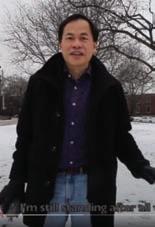
alumni@utschools.ca @utschools
www.utsconnect.ca @utschools / @rosemary_evans @utschools
Let it Snow – A COVID holiday song. Ben also spoke at the UTS Tile Chapter’s Tile Talk in December.
Wendy Drukier ’86 became Canada’s Ambassador to Spain in December 2020. Most recently she was director general, economic development at Global Affairs Canada, and from 2012 to 15 she was ambassador to Costa Rica, Honduras, and Nicaragua.

Jocelyn (Jodi) Kinear ’93 was named in 2020 as Canada’s Ambassador and Permanent Representative to the Organization for Security and Co operation in Europe, stationed in Vienna, Austria.

Dr Michelle Cohen ’98 and Dr Tara Kiran ’95, P ’25 had a great response to their pioneering analysis on the gender pay gap in Canadian medicine, published in the Canadian Medical Association
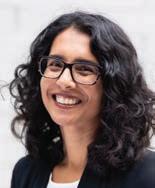
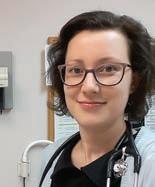
Journal last year. “Pay inequities have gone unaddressed in the medical profession thus far, but the tremendous response our paper has received indicates that the time has finally come to focus on the problem and work to resolve it,” says Michelle. Neither Tara nor Michelle realized that they were both UTS alums until months after their paper was published, making another great UTS connection!
Ananya TandonVerma ’10 continued working with Feed the Frontlines Toronto. After delivering 30,000 meals to frontline workers at 29 hospitals and facilities, and supporting nine restaurants, her work with this organization pivoted to support Rexdale families experiencing food insecurity due to the pandemic.
Maddie Cusimano ’11 dropped in virtually to Sarah Shugarman’s S5 (Grade 11) music class to talk about her unusual path post-UTS and current dissertation research into the creativity underlying our sensory experience of sound. After obtaining a Bachelor of Science in Music, with minors in Chemistry and Psychology, from University of Toronto in 2015, she started graduate school at the Massachusetts Institute of Technology (MIT) in the Brain and Cognitive Sciences department. Her work is supported by the MIT Center for Brains, Minds and Machines, which fosters interdisciplinary collaborations that explore human intelligence. Maddie is a guest lecturer at the MIT Museum Studio, a maker space at the intersection of art and science.
Edward Tian ’18 , a computer science and journalism student at Princeton, wrote


// A global COVID-19 mapping tool launched in April, thanks in part to the efforts of UTS alumni (clockwise from top left) Jessica Situ ’20, Dr . Jennifer Nguyen ’10, Sungmin Lee ’19, and Sumin Lee ’20. This project highlights the important role public funding plays with COVID-19 research on vaccines, therapeutics, and diagnostics. Dr. Nguyen coordinated this Universities Allied for Essential Medicines project in North America, which involved many students around the world.

a fascinating data analysis piece about COVID-19 Twitter disinformation, and presented his findings to the World Health Organization in October.
Vedika Jha ’20 published her AP Research findings in the Yale Journal of Biology and Medicine. Her project focused on assessing the social influences, self-esteem, and stress of peers who vape.

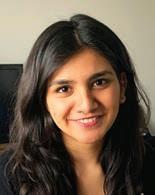
Vic Nishi ’78 was featured on CBC Radio for skiing in the Canadian Ski Marathon
in February, an event held virtually due to COVID-19. That means he skied 100 kilometres in two days – amazing!

Dr . Matthew Muller ’89, an infectious disease specialist with St. Michael’s Hospital, was featured on CTV News as researchers sought 600,000 Canadians to take part in a survey about COVID-19 vaccine side effects.
Tireless efforts are adding up to promising results for U of T researcher Dr Jordan Feld ’91, a liver specialist at University Health Network. The Globe and Mail reported that his research found the drug interferon lambda can reduce the length of infection and spread, and may prevent hospital stays. The study was published in February’s Lancet Respiratory Medicine.

Tariq Fancy ’97, former UTS Foundation director, wrote an opinion piece for the Globe and Mail, saying, “BlackRock hired me to make sustainable investing mainstream. Now I realize it’s a deadly distraction from the climate change threat.” His hope is that the article will “spark a large and important debate.”

// Roman Waschuk ’79, the former Canadian ambassador to Ukraine, appeared on CTV National News last fall, speaking about the “crunch” situation in Belarus as the regime radicalized its approach and national strike loomed.

Hugh AnsonCartwright ’48 received a U of T Arbor Award for his exceptional volunteer service to the university. Since the seventies, Hugh, an antiquarian book dealer, has volunteered at Trinity’s John Graham Library and other U of T libraries, sharing his extensive experience as well as his own gifts of scarce items.
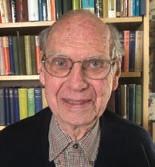
John Chew ’81 was honoured in March as this year’s recipient of the Peter Gzowski Award, given annually to recognize a Canadian’s contributions to adult literacy. John, who is a software developer and Scrabble consultant, has helped the charity Frontier College raise millions over the years through Scrabble events, including the live-streamed fundraiser where the award was presented.
Felicia Knaul ’84, P ’15 was named a 2020 Fellow of Canadian Academy of Health Sciences, one of the highest scholarly honours in Canada. A director at the University of
Miami Institute for Advanced Study of the Americas and Professor at the Miller School of Medicine, she’s honoured for her policy contributions and pioneering research in women’s and children’s health, global cancer, palliative care and pain relief, and health financing.
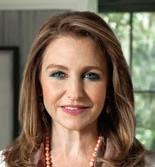
Celine O’Neil ’15 took home the 2020 gold medal for engineering from the University of Waterloo, a very impressive achievement.

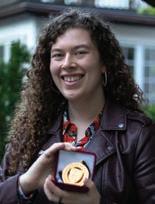
Amazing innovation from Nishita Saha ’16 , a member of the UWTensil team that won the University of Waterloo Velocity Entrepreneurship

Concept for their affordable, biodegradable cutlery solution for restaurants, using a novel material.
Anjalee Narenthiren ’20 was awarded the TD Community Leadership Skills Scholarship for her innovative approach to support students’ skills in technology and entrepreneurship.
Congratulations to poet Dennis Lee ’57, P ’84 on being awarded the Matt Cohen Award from the Writers’ Trust of Canada, recognizing his lifetime of distinguished work, which includes founding the House of Anansi Press, winning a Governor General’s Literary Award in 1972 for Civil Elegies and Other Poems, and publishing 15 books of poems and 28 books of children’s poetry, including the iconic Alligator Pie. He was also Toronto’s first poet laureate.

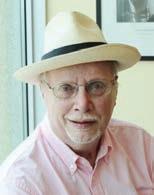
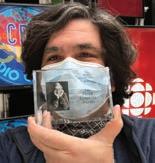
For 50 years, John Sayers ’57 collected ocean liner ephemera – likely the largest
// Voices in the Whir, a composition by Sergei Kofman ’14, won the Ann H. Atkinson Prize in Composition from the U of T New Music Festival. He is pictured in the centre with the band.

collection of its type in the world. Now it is officially preserved for posterity as The Sayers Collection at the Weston Library at the University of Oxford. His book, Secrets of the Great Ocean Liners, launched internationally in November 2020. The book has been reviewed in UK papers The Telegraph and The Times, and in the New York Times. John credits the inspiration of his UTS Grade 10 English Teacher, R . J . (Ronnie) McMaster, who made Shakespeare’s Julius Caesar come alive, as influencing him to write five books and many articles, while he worked as a chartered accountant (now retired).
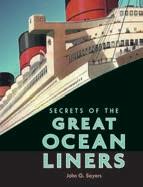
What is the future of blackness?
Sensitivity, a play by Lawrence Hill C M ’75 , was part of 21 Black Futures, an anthology of performances from Obsidian Theatre Company that streamed earlier this year on CBC Gem.
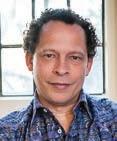
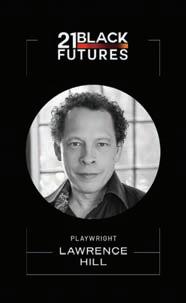
UTSAA Board Director Dr . J essica Ware ’95 wrote a children’s book entitled Bugs – A Day in the Life, that follows bees, caterpillars, ants, and more through a day in their lives.

Isabella Chiu ’13 aims to bring more Asian representation to children’s literature with her children’s storybook, Let’s Get Boba!, which tells the story of Charlie, an Asian-Canadian girl who introduces her best friend to boba (bubble tea).
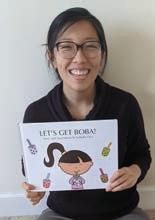
Melanie Adler ’10, who as a volunteer coach helped the UTS 2019-20 Foundation Girls Basketball Team win gold at the SSAF Championship, and Kevin Kim ’11 , welcomed their first baby, Nathaniel Ty Adler Kim, on March 18, 2021. She says UTS has been and continues to be a huge part of her and Kevin’s lives.

Created in 2016 to celebrate exceptional volunteer service by members of the UTS community, this year the UTS Heartwood Award for Volunteer Service has been awarded to six dedicated volunteers.
the admissions process, and creating financial modelling that made our renewed building possible.
Ann Chung P ’20, ’24, ’25
As a UTS Parents’ Association (UTSPA) parent volunteer group coordinator, Ann helped the grade representatives navigate the challenges of organize virtual social events and was instrumental in welcoming new parents.
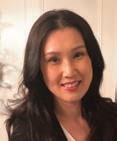
Prabhat Jha P ’16, ’20
The magnitude of what Prabhat gives to UTS is immeasurable, with his work on the Board guiding UTS through the pandemic and fostering inclusion in Admissions, and as Building the Future campaign co-chair.
Lawrence Hill C M ’75
From the Black Equity Committee to the Community of Support, UTSPA and Building the Future Speaker Series events and more, Lawrence brings our community closer together and makes it more welcoming for everyone.
Morgan Ring ’07
Morgan honoured previous generations of alumni through her work on the WWI Commemorative Project. She also serves as an UTSAA director and events committee chair, lends her eagle eye to The Root, and more.
John Wilkinson ’78
Blaze Island , a Shakespearean climate crisis-inspired story set on a fictionalized version of Fogo Island by Catherine Bush ’79, made the year-end best books lists of the Globe and Mail, the Writers’ Trust, and 49th Shelf and received much critical acclaim.


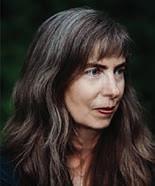
David Allan ’78
David, a former UTS Board director, served on many committees, working tirelessly to increase inclusion in

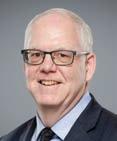
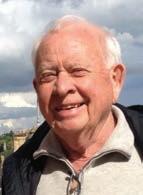
A loyal UTS volunteer, John served as a Building the Future Campaign Cabinet member, former UTSAA director and president, and continues to steadfastly foster good governance at our school.

Fall 2020 proved to be a virtual reality, bringing the UTS community together from all corners of the world. Principal Rosemary Evans, and members of the UTS Advancement team – Martha Drake, Carole Zamroutian , and Rebecca Harrison – were delighted to host and participate in many online get-togethers.

Thirty members of the Class of 1965 caught up in a virtual reunion on an October Sunday, enjoying a parody performance from Jeffrey Stutz ’65 and his son, of his composition, My Marks were Only Fair. What fun!


The Class of 1967 was in great festive spirits at a virtual holiday luncheon on December with 29 people attending from across Canada and the United States.
The camaraderie of the Class of 1970 is as strong as ever, with 42 members turning out for a virtual celebration in October where they launched their anniversary video interview project, an amazing initiative by their class. Stephen Gauer ’70, a writer/journalist, set up interviews asking everyone the same questions, recording the answers, and hosting them on Vimeo for the class.
Retired UTS staff shared wonderful stories and memories at the Retired Staff Luncheon in December with 23 attendees. All agreed that their time at UTS was among the best years of their lives and that the school is an amazing place filled with remarkable people.
Over 180 alumni from the Classes of 1950 to 2015 came to the Virtual Alumni Reunion’s two October Zoom sessions, held in place of the Annual Alumni Dinner, to celebrate those with a graduation year ending with a 0 or 5. Having the event virtually made it possible for six alumni to come from New Zealand, Luxembourg, the UK and France, 38 from the U.S., and 10 from outside Ontario.
For Halloween, UTS hosted its first-ever virtual Pumpkin Carving Contest, with 26 community members including staff, students, and alumni submitting spooktacular creations. Winner of The Great Pumpkin Award was M4 (Grade 10) student Erik, with Alan Landsberg ’56 taking the UTSPA Award (as well as Honourable Mention for the Great Pumpkin Award). James Brown ’96 took the People’s Choice Award and UTS English Teacher Julie Stoyka won the UTSAA Award.

Two esteemed alumni, Nobel Laureate Dr Michael Spence ’62 and Health Economist Dr . Felicia Knaul ’84, P ’15 shared their hopeful views on the COVID-19 economic recovery in November at the virtual Fall 2020 Building the Future Speaker Series.

Also in November, some of Canada’s top legal minds came out for the first virtual book launch at UTS, featuring UTS alumnus and author Jack Batten ’50 and his latest book, a biography of Ross Mackay ’50, entitled Ross Mackay: The Saga of a Brilliant Criminal Lawyer.


The virtual Remembrance Day ceremony at UTS featured student performances and Dr Christopher Giannou C M ’68 , former Red Cross Chief Surgeon, who has saved lives in the world’s killing fields and implored us to contemplate the future in a more humane way.

Interested in joining the Branching Out program to mentor senior UTS students?
Contact Rebecca Harrison for more details: rebecca.harrison@utschools.ca.

On the same day, the UTS Parents’ Association hosted In Conversation with Lawrence Hill C.M. ’75, with the esteemed author speaking about social justice, his experience as a Black Canadian and UTS student, and strengthening inclusion within the UTS community.
Several alumni lent their expertise to Branching Out career panel discussions

in February and March, giving UTS students an opportunity to learn firsthand about careers in medicine, business and finance, technology and engineering, and the arts and humanities.
In March, the UTS Alumni Association presented Your First Career Steps: Taking the Right Path Without Knowing the Destination, an informative, inspiring discussion for students and alumni with Hana Dhanji ’05 , an Executive Coach; Cynthia Wang ’13 , a KPMG consultant; Angela Chen ’13 , Senior Consultant at Deloitte; and Elisha Muskat ’01 , VP Finance and Operations at Citizen Schools.
EDGAR FULTON JULL ’31 1914–2019 Edgar Jull never forgot his time as a member of the UTS diving team. He was a proficient swimmer and diver his entire life, on occasion impressing his son Kenneth’s friends (and their parents) at backyard pool parties. In fact, UTS as a whole mattered so much to Edgar that he attended well over a dozen Remembrance Day events at the school, beginning in the late 1990s when he was in his 80s and including the year he turned 100. “Though a bad back prevented him from enlisting, he had friends who fought and died in the war,” says Kenneth. “He was honoured to be included in the school’s ceremonies.”
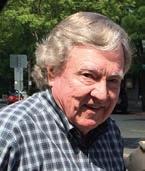
E dgar was unlike many of his UTS classmates. He neither completed university nor had a conventional career. He left the corporate world because he found its culture to be aggressive and mean-spirited, instead dedicating his time to reading widely, raising his family, maintaining his fitness, helping his friends and neighbours, and pursuing his love of film as president of the Toronto Film Society. He taught his children kindness and compassion, and Kenneth and his sister Wendy felt spoiled to have
had their father so much in their young lives which Kenneth says was “very unusual for the times.”
A descendent of Orange Lawrence, the founder of Orangeville, Edgar was proud of his heritage, his family, and his alma mater. “He always talked about UTS,” recalls Kenneth. “It shaped his love of scholarship and history as well as his incredible zest for life.”

Close friend and UTS classmate Bill Lett ’53 isn’t the only person to describe Gord Perkin as humble, generous, and self-effacing. Though heralded as a “giant in public health,” Gord was known to freely share his innovative healthcare ideas and then waive credit once they bore fruit. As one former colleague put it, he was a “rare, brilliant man with no ego.”
G ord began his medical career as a general practitioner after graduating from the University of Toronto in 1959. Then, with a desire to reach and help a greater number of people, he left family practice to conduct research in contraceptive technologies – an abiding passion of his along with women’s and children’s health. He became an advisor on population issues for the Ford Foundation, a non-profit dedicated to advancing social justice. Gord then founded the Program for Appropriate Technologies in Health (PATH) in 1977, which is now one of the largest global health non-governmental organizations. In 1999, as a result of that work, he was invited to join the Gates Foundation as executive director of global health programs. There, he helped to create Gavi, the Vaccine Alliance, which has vaccinated over 820 million children in the world’s poorest countries.
A fter his retirement in 2005, Gord remained active as a global health advocate, most recently fundraising for Terrewode Women’s Hospital, the first specialized fistula treatment hospital in
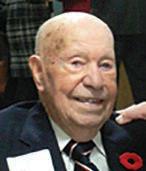
Uganda. The Terrewode organization recently established the Gordon Perkin Maternal Health Innovation Fund in honour of his lifetime commitment to maternal health.
G ord was invested as an Officer in the Order of Canada in 2010 in recognition of his dedication to improving the health of citizens in developing countries. Bill says the distinction caught Gord by surprise but Gord felt that it was “a wonderful boost to be so appreciated.” Recalling their time together at UTS, Bill adds that History Teacher Andy Lockhart was a mentor to them both and helped Gord decide on a career in medicine.
A fter his death on August 21, 2020 from lung cancer, Bill and Melinda Gates said they were “heartbroken” and described Gord as “instrumental in establishing our foundation as a credible partner in the field.”
G ord is survived by his wife Elizabeth and sons Scott and Stuart.
DAVID TILBROOK ’67 1947–2021
David Tilbrook was a digital innovator when the world was still analogue. As a student

at the University of Toronto in 1973, he designed the digital catalogue for the newly built Robarts Library. In 1975, he created NewsWhole, a digital pagination program that became the first digital page layout system for the Globe and Mail, a precursor to modern page layout systems like Adobe InDesign.
He invented tools taken for granted now, like the context-sensitive cursor that changes depending on the state of the computer system, and the dimming of unavailable icons, such as incompatible apps that appear grayed out when opening a file. Significant software contributions during his career include Research in Motion (now Blackberry).
But what his family and friends remember most is his rare combination of logic, cuddles, and playfulness. David passed away due to COVID-19 on January 15, 2021 at Kensington Gardens in Toronto.
David was a doting husband to Louise Sommers for 52 years, father and grandfather to Joe (Aubrey, Aiden), Shana (Danae) and Devon (Aviva, Imogen, and Mitzi), brother to the late Stephen Tilbrook ’73 , and uncle to Lisa (Dunn) Gordon ’79
(Dunn)
Fresh air and our connection with nature has taken on renewed importance this year due to the COVID-19 pandemic, with UTS students and staff enjoying classroom breaks in parks, carrying on a tradition that hails back to the early days of UTS, when students were encouraged to take fresh air and exercise to stave off tuberculosis .
High Park was a perennial favourite for track and field, which also included wheelbarrow and “pick-a-back” races . In 1938, the Twig said, “The run this Fall was held on Friday, October 21st and the High Park Club house was as ever a seething mass of riotous humanity . The weather left nothing to be desired and the slight nip in the air did much to further the efforts of the boys . ”


Now, as the pandemic helped us re-evaluate our relationship with nature and gain a greater appreciation for being outdoors, the tradition of outdoor exercise continues on, revitalized at our school .

